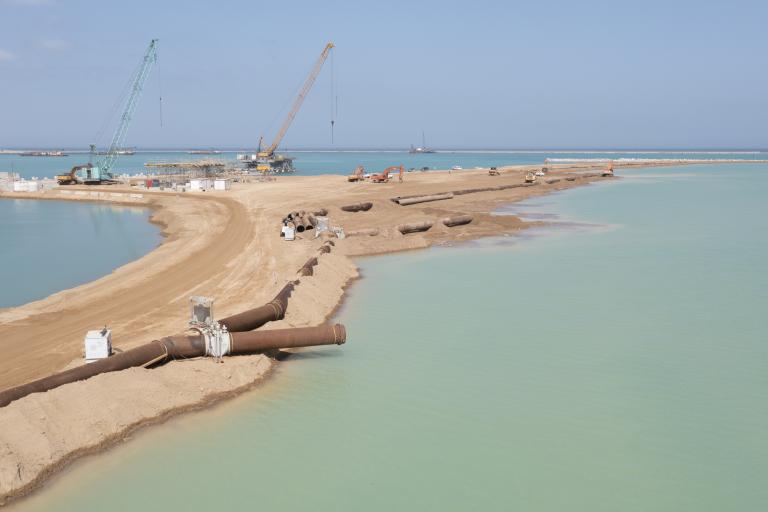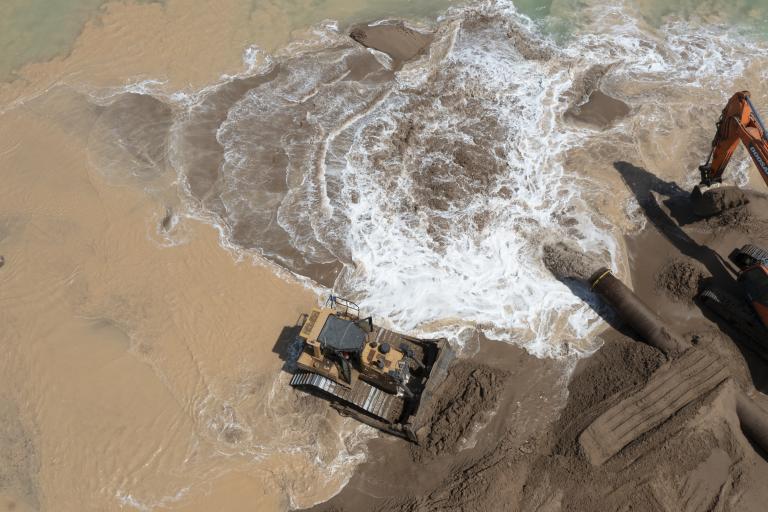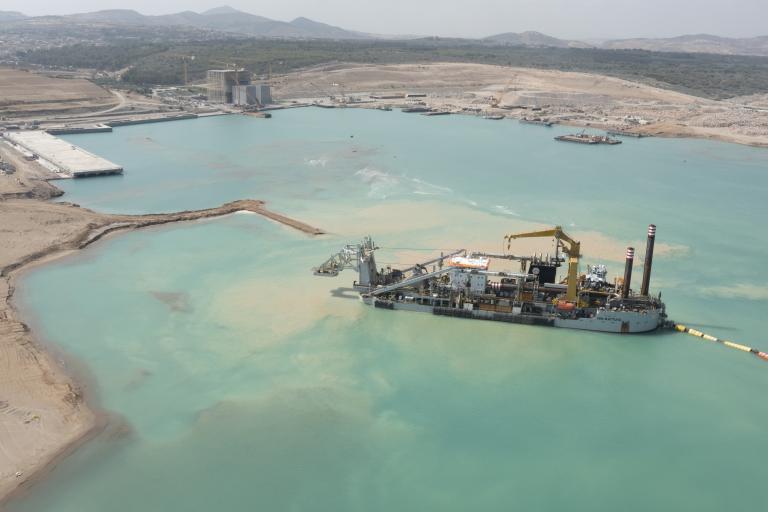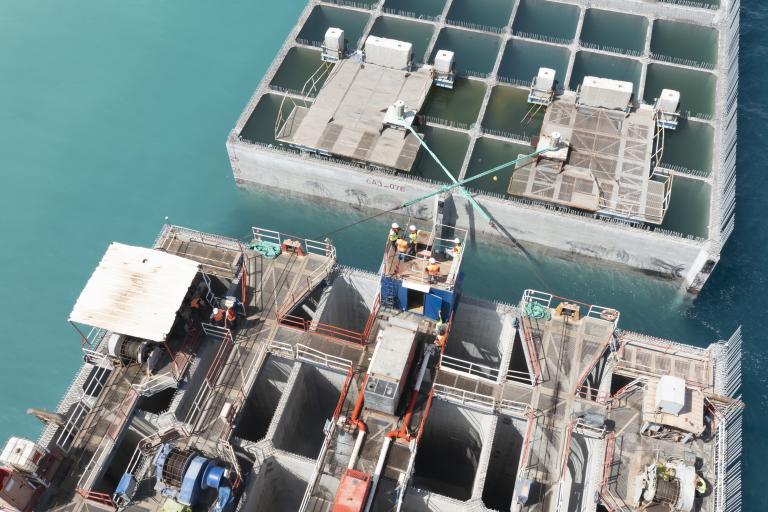Thanks to its ideal location on the caravan route between Europe and Africa, Morocco has strong assets both as a producing country and as a logistics hub. Several multinationals, suppliers and logistics service providers have already established themselves in the land of ancient Berber dynasties. Since King Mohamed VI took office, the country experienced strong economic growth and is strategically committed to developing its own regions.
The eminent development NWM has matured on the successful experience of the Tangier Med project along one of the world's busiest shipping routes. The public limited liability company 'Nador West Med' has been created for the construction, development, planning, promotion and management of this industrial port and free trade zone. The NWM project will be built in a tactical location, namely along Betoya Bay. Located on the western side of the 'Cap des Trois Fourches' peninsula, about 30 km as the crow flies from Nador city centre, it is close to the main East-West shipping routes for containerisation and transport of oil and gas products throughout the Mediterranean region.
The complex consists of :
- a new deep-water port equipped with significant capacities for the development of an energy pool (handling, packaging, storage of hydrocarbons and derivatives), container transhipment and bulk product processing;
- an integrated platform/free trade zone, open to renowned investors, designed to accommodate the globally active companies and supported by the port.
The port infrastructure will be realised in different modules with:
- a medium- and long-term development potential allowing operators and potential shipowners to develop visions and perspectives;
- a progressive realisation of the infrastructures and flexibility in planning possible future expansions;
- the ability to adapt to changes in the maritime transport sector and industry.
NWM awarded the contract for the design and construction of the first port module to the Consortium of STFA (Turkey) - SGTM (Morocco) and Jan De Nul. This first module includes:
- a main embankment/breakwater over a length of approx. 4,300 m (consisting of 148 caissons over approx. 3,000 m and 1,300 m of rock embankment with concrete acropods) and a secondary breakwater/dike of about 1,200 m (also rock & acropods);
- two container terminals (concrete deck on piles) with quay lengths of 1,520 m (TC1) and 600 m (TC2); expandability by an additional 600 m), at a depth of -18 m and an adjacent container yard/platform over an area of 76 ha;
- a petroleum terminal with three tanker-berths at a depth of -20 m;
- a bulk terminal with a 360 m quay and a depth of -20 m ;
- a diverse terminal (-11 m depth) with a ro-ro berth and a service quay
We are responsible for carrying out the dredging works. Since 2016, we have already dredged 25 million m³, accounting for 88% of the total dredging scope. We also took care of the soil-substitution scope for the JV partners. The execution of the dredging works is phased and completely intertwined with the civil construction activities executed by the JV partners.
Anno 2016-2017, soil material of lower quality was already dredged by the Vasco da Gama below the future main embankment (± 7.5 million m³). This trench was then filled with substitute good-quality sand recovered from onshore excavation works. What was dumped into the sea by trucks, was dredged by CSD Zheng He and loaded into split barges that filled the trench afterwards. This sand was compressed by vibro-compaction in order to create a sufficiently stable foundation on top of which the rock bed and concrete caissons were placed on top. A total of 148 caissons, each weighing 8,500 tonnes, have been installed.
The manoeuvring zone widening the access channel to the port has also been deepened to level -22 m by our ‘Vasco da Gama’ and largely levelled by our multicat DN46 with a sweep-beam in order to reach the extremely strict contractual tolerances.
In the early years, a solid part of the central harbour basin was set up as a temporary shelter zone by the CSD Zheng He. By means of split barges, the non-reusable soil material was taken to the assigned offshore dumping zone. In 2018, the Zheng He started working again to extend part of the shelter area.
The hopper Francesco di Giorgio took on trench dredging for the secondary breakwater in 2019, while the hopper Pinta entered the hopper stage in 2020 and 2021 to dredge the Eastern Cavalier and a first section of the trench for the Eastern Container Terminal to depth, together amounting to approx. 2 million m³.
The remaining part of the dredging volume in the central port basin and the trenches for the Container Terminals is a precision job for a Cutter Suction Dredger. The various dredging operations are planned in coordination with the JV partners. Over the past summer months, the CSD Ibn Battuta has been working at full speed. In July, the portion of reusable sand was first reclaimed through a floating and land pipeline. The cutter then loaded the split barges L'Aigle, L'Etoile, Boussole and Le Guerrier in order to start dumping the non-reusable soil material offshore again.
Next year, we only have to carry out the final round of finishing and clearing. The final completion date of this port contract is scheduled for the end of June 2024.



